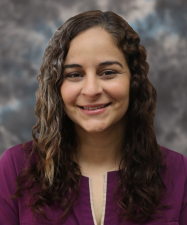Water is essential for life. And life on Earth as we know it hinges on our collective ability and commitment to safeguard and preserve the purity of water – a vital resource that unites us all.
This Earth Day, we spotlight three researchers from the University of Florida’s Engineering School of Sustainable Infrastructure & Environment who are at the forefront of water research, as they examine innovative solutions and pressing challenges to protect, preserve and restore our precious water resource.
Protecting Water with Sentinels on the Coast

The 2020 Atlantic hurricane season was a historical, recording-breaking season, with an unprecedented number of storms forming and hitting landfall in the United States. The National Oceanic and Atmospheric Administration recorded an all-time high of 30 named storms, in which 11 made landfall in various areas in the nation. Forrest J. Masters Ph.D., P.E., professor in civil and coastal engineering, and Brian M. Phillips, Ph.D., P.E., associate professor in civil and coastal engineering, saw this as a missed opportunity to capture the worst wind and wave conditions, which could inform emergency management agencies, coastal communities, and the government, on properly preparing for and managing storm recovery. With the support of UF and industry sponsors, Masters, Phillips, and a team of researchers created the first design for a Sentinel, a weather station designed to be installed directly on the beach to monitor extreme coastal weather events.
With a National Science Foundation Major Research Instrumentation award that he and his team received in 2022, Phillips began looking into enhancing the design of Sentinels. Sentinels are advanced monitoring stations that collect data on wind, storm surge, waves, and water quality before, during and after a hurricane makes landfall. Sentinels stand 33 feet tall to collect unobstructed wind measurements and relay data back to UF in real-time. The stations are directly anchored into the beach using 20-foot-piles installed days before a hurricane makes landfall to ensure they capture the worst conditions. The NSF award supports the construction of additional Sentinel units and the addition of water quality sensors, among other new instruments, to support a variety of coastal research projects. The short-term goal is to build eight Sentinels to cover a wider swath of the impacted coastline.
“We are focusing on improving the foundation system for the new Sentinels and we are exploring alternative pile designs for ease of installation in multiple soil and sand conditions,” Phillips said. “At the same time, we are improving the design of the mast instrumentation package, and pier cap to reduce wave impact forces on the station and facilitate the addition of new instruments.”
The team will deploy with three Sentinels, in addition to four traditional mobile weather stations, for this year’s Atlantic Hurricane Season. After this hurricane season, the Sentinels will contribute vital datasets to the community, one of which is measurements of water quality as storm surge rises and recedes. Untreated water, sediments, organic matter, and other pollutants enter waterways, reducing water quality and leading to environmental impacts such as massive algae blooms. They will assess water quality through metrics such as dissolved oxygen, turbidity, phycoerythrin, chlorophyll, and UV fluorescence. During extreme coastal events, accurate monitoring of water quality is crucial for safeguarding public health. In addition, the wind and wave data collected will greatly enhance our capacity to predict and mitigate coastal hazards more effectively.
Phillips added that these stations will advance research in other areas that are of pivotal importance to coastal communities, “Sentinel stations will support fundamental research spanning numerical weather prediction, coastal erosion dynamics, storm surge shallow wave modeling, and boundary layer meteorology.” He also emphasized that a better understanding of hydrodynamic loading of coastal structures is essential as we continue to build a sustainable and safer environment.
Preventing PFAS Contamination to Preserve Florida’s Waters

In recent years, the Indian River Lagoon (IRL), a critical estuary encompassing 40% of Florida’s East Coast, has experienced a decline in fish, manatees, dolphins and seagrass. Katherine Y. Deliz Quiñones, Ph.D., an assistant professor in environmental engineering, and her team have identified a high diversity and concentration of per- and polyfluoroalkyl substances (PFAS) in the IRL, particularly near wastewater discharge zones. The discovery stands as a grim testament to the escalating threat of PFAS infiltration into Florida’s waterways, sounding the alarm for our cherished ecosystem.
Known as “forever chemicals”, PFAS are used in a variety of daily products—from non-stick cookware to cleaning products—that do not decompose in the environment, according to the Centers for Disease Control and Prevention. PFAS has been found in our food, blood and water. Scientific studies have shown that exposure to some PFAS in the environment may be linked to adverse health effects, including compromised immune systems in both humans and animals. In an effort to protect public health the EPA has recently designated two widely used PFAS chemicals, perfluorooctanoic acid (PFOA) and perfluorooctanesulfonic acid (PFOS), as hazardous substances under the Comprehensive Environmental Response, Compensation, and Liability Act (CERCLA), also known as Superfund. While this new rule will help allocate funding to clean up contaminated sites, there is still much to do to protect communities and the environment from these pervasive contaminants.
In her new study, supported by the U.S. Geological Survey (USGS), Deliz will explore weather PFAS widespread occurrence in the Sate’s coastal areas have significant ecological and toxicological impacts on aquatic species. This research will help address public health concerns about PFAS contamination in the region.
“The community is uncertain about the safety of using the IRL for subsistence, for example consuming local fish from the IRL. We want to play a positive role in helping them find answers to their concerns,” she emphasized.
Results from the data will be used to develop new provisional screening levels to protect aquatic species. “Our research will provide insight into the biological effects of PFAS mixtures. These are critical toward developing risk assessments and regulatory guidance for PFAS, all of which are currently lacking in Florida,” Deliz remarked.
This is the first time a UF-led research project has been awarded a USGS WRRA Grant. Beyond establishing validated screening levels, Deliz and her team are pushing to enhance the extraction and analysis of PFA in environmental samples. Additionally, this project will be crucial to evaluate the impact of PFAS contamination on the expression of microbial genes involved in biochemical cycles vital for informing nutrient management strategies, thus offering further hope for cleaner Florida waterways.
Eliminating Harmful Metals to Restore Water’s Purity
In 2022, the U.S. Environmental Protection Agency (EPA) issued updated drinking water health advisories prompted by reports of newly discovered health risks associated with ingesting forever chemicals and metal-contaminated waters at levels previously deemed safe. While water filtration systems are commonly believed to effectively remove most pollutants, some have been found to persist in the water even after purification. Additionally, certain residuals generated from the water treatment process, known as drinking water treatment residuals (DWTR), have peculiar physicochemical properties and could be used as sorbents in the remediation of contaminated sediments and soils.
Jean-Claude Bonzongo, Ph.D., a professor of water systems in the Department of Environmental Engineering Sciences, has devoted his research to providing environmentally conscious techniques to safeguard and restore communities affected by toxic metals. His current research focuses on identifying practical methods to clean up polluted waterways using different sorbents including DWTR. Repurposing the DWTR not only reduces disposal costs but also holds the potential to lower expenses for consumers. Furthermore, capping metal-contaminated sediments aids in the rehabilitation and restoration of natural resources, such as Superfund sites, thereby reducing community exposure to harmful metals.
“My research primarily aims to eliminate people’s exposure to harmful pollutants in water. Whether we’re consuming drinking water or engaging in water-based activities such as swimming, we are at risk of metal exposure. When these pollutants enter our water, food, and other environmental matrices, they can lead to adverse health outcomes such as heart disease and various types of cancer,” warned Bonzongo. The EPA warns that high levels of metal intake can lead to acute and chronic toxicity, with detrimental effects on the liver, kidney, and intestines; increasing the risk of intestinal damage, anemia, and cancer.
“Our work encompasses expertise in water treatment, environmental biogeochemistry, remediation of contaminated soils and sediments, and ecotoxicology. It is crucial to find new solutions and adapt to a changing planet,” Bonzongo added.
—
Written by Reba Liddy
ESSIE Marketing and Communications Specialist
Edited by Helen Goh
Herbert Wertheim College of Engineering Associate Director
